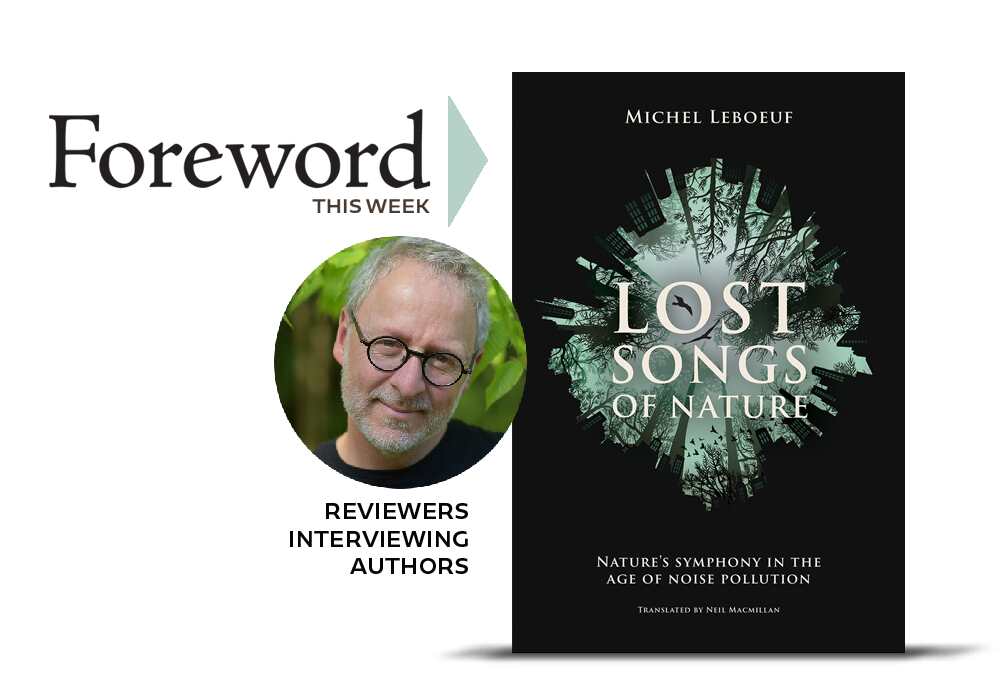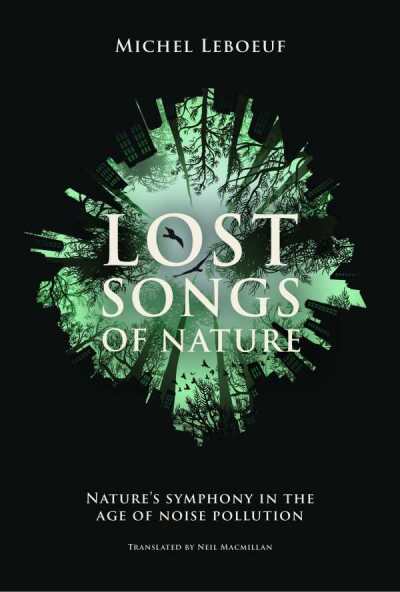Reviewer Kristen Rabe Interviews Michel Leboeuf, Author of Lost Songs of Nature

We’ve made the wise decision to let Emily Dickinson take over the duties of introducing this conversation between Michel Leboeuf and Kristen Rabe, reviewer of Michel’s Lost Songs of Nature. Emily chose to do it in verse:
“Hope” is the thing with feathers –
That perches in the soul –
And sings the tune without the words –
And never stops – at all –
And sweetest – in the Gale – is heard –
And sore must be the storm –
That could abash the little Bird
That kept so many warm –
I’ve heard it in the chillest land –
And on the strangest Sea –
Yet – never – in Extremity,
It asked a crumb – of me.

Emily also inspired us to crow about other great works of poetry, so please cast your attention to the 2024 INDIES Book of the Year Awards winners in the Poetry category: Magicicada, by Claire Millikin (gold); Twisted Pairs, by Gabriel Spera (silver); Santa Tarantula, by Jordan Pérez (bronze): The Sky Was Once a Dark Blanket, by Kinsale Drake (honorable mention). Digital subscriptions to Foreword Reviews are free as a bird.
Most nature books focus on what we see, but in Lost Songs of Nature you focus on what we hear. Why is this perspective important? What do sounds tell us about the health of an ecosystem?
Vision has dominated our sensory environment for at least 10,000 years, and this dominance is reflected in society’s approach to science and technology. In all fields, knowledge has been passed on from one generation to the next through writing, which is a visual medium, first on paper, now digitally. “The medium is the message,” Marshall McLuhan, Canadian media theorist, once said.
After a longtime focus in ecology and biology on visual or other biometric measures, we are now increasingly interested in the sonic dimension of ecology. In doing so, we are realizing the disproportionate role that humans play in the planet’s soundscape and its impact on the relationships between species and their natural habitats.
Your observations in this book concentrate on the lakes and forests of Canada. What are some distinctive qualities of that soundscape?
Each natural landscape has its own distinctive soundscape. The flora and fauna of the temperate and boreal forests of Canada have a unique signature characterized by the sound of the wind in the black spruce trees’ foliage and the amorous calls of moose, Canada jays, and all the other mammals and birds that breed there. That sound signature is clearly different from the cypress forest of the southeastern United States or the dry oak groves of southwestern parts of the continent.
You reference indigenous peoples like the Innu and Abenaki. Do you think ancestral peoples were more attuned to the sounds of nature? If so, what was the turning point in humankind’s experience of sound?
Listening is in our very nature; it is how humans used to perceive the movements of our prey or the dangers lurking in the shadows.
Since Homo sapiens adopted a more sedentary lifestyle with the widespread use of agriculture some 10,000 years ago, however, we have needed a way to record information, for example, on agriculture technologies or on the organization of large society. Necessity is the mother of invention: this is how writing came to be. Only traditional societies have retained oral transmission to disseminate information. And I think that, even today, these peoples have retained a stronger sense of hearing than we have in most Western societies.
Your book is organized into symphonic movements—and your writing often refers to human music. What’s the link between musical compositions and the natural world? Does the practice of listening to music make us more attuned to the sounds of nature?
Absolutely! The ability to compose and enjoy listening to music comes from the depths of time, inspired by the sound environment of the natural world. The rhythm of the drum is that of life beating; and the breath of the flute comes to us from the thrushes.
Is human-caused noise pollution further jeopardizing biodiversity? Can you give any examples of how degraded soundscapes affect plant or animal species?
Unfortunately, yes. Scientific research has documented the impact of noise pollution on biodiversity, both in terrestrial ecosystems and in fresh and marine waters. Man-made noise reduces the ability of many animal species to detect and respond appropriately to sounds in their environment.
Animals subjected to such conditions change their behavior. For instance, some male birds have had to change their singing or sing more often to continue to attract females; studies found that birds eventually left their habitat because human-caused noise made it uninhabitable. Like humans, animals are exhibiting higher levels of stress hormones such as adrenaline and cortisol, which can reduce their resistance to illness by weakening their immune systems.
Noise generated by human activity also has unexpected effects on birds’ dispersal of tree seeds and insects’ pollination and consumption of plants. For example, bumblebees and grasshoppers are less likely to visit flowers or to feed on vegetation in environments where noise pollution is severe.
What are the best ways to address noise pollution? What positive actions can readers take to help preserve the songs of nature?
The solution is surprisingly simple: we must protect as much natural environment as possible. We must aim for a minimum of 30 percent of natural areas preserved—as measured across a city, a county, or a state. The goal should be to reduce human pressure and restore nature’s music on a third of the land surface.
At the citizen level, we can put pressure on municipal or county authorities to insist on reaching this 30-percent target. We can also promote biodiversity around us, for example, favoring native plants for insect pollination, replanting trees, etc. These may seem like small gestures, but collectively they can produce big results.
Kristen Rabe
